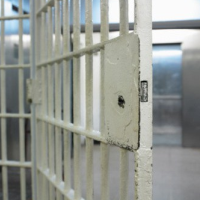Latest L.A. County– U.S. Jail Settlement Is “Historic” and a “Landmark”
 (photo: Hans Neleman, Getty Images)
(photo: Hans Neleman, Getty Images)
It’s a year or two, depending on the source, until the 20th anniversary of the U.S. Justice Department’s (DOJ) first official attempt at cleaning up the Los Angeles County jail system, an occasion certain to be enhanced by the presence of the newly-appointed federal monitor.
In what the DOJ is calling a “landmark” and “historic” settlement, the county has agreed to accept federal oversight of the jails while a wide range of reforms involving excessive use of force and suicide prevention is put in place. The settlement has been inevitable for awhile and many of the reforms have already started.
But the jail system is still a snake pit. In June, three sheriff’s deputies were convicted of beating a visitor to a pulp and filing false reports to hide it. The month before that former Undersheriff Paul Tanaka was charged with obstruction of justice.
The feisty sheriff’s department has resisted federal intrusion on their turf and in one epic encounter in 2011 shuffled an FBI jailhouse informant through the jail system for days after finding him out, so they could debrief him and plan strategy. That didn’t work.
The original crackdown on the county sheriff’s department two decades ago was over the poor treatment of mentally-ill prisoners. A resulting 2002 memorandum of agreement was supposed to take care of “deficiencies in mental health care, suicide prevention and the use of excessive force against prisoners with mental illness,” according to the DOJ.
It didn’t. A June 2014 DOJ report described “dimly lit, vermin-infested, noisy, unsanitary, cramped and crowded” conditions that probably had something to do with the number of suicides increasing from 4 in 2012 to 12 the next year.
A separate federal effort targeted excessive use of force by deputies resulted in settlement of a class-action lawsuit, Rosas v. McDonnell, focused on three downtown facilities. The new agreement applies the reforms in the lawsuit to all county jail facilities.
Sheriff Lee Baca was ousted in 2013 amid revelations of corruption scandals, jailhouse beatings and bad behavior by deputies in and out of the department jails. The DOJ sued the county for its systematic mistreatment of minorities in the Antelope Valley cities of Lancaster and Palmdale.
Blacks and Latinos were routinely stopped and searched more frequently than whites, but were often released without being cited. Deputies regularly detained community members, including domestic violence victims and minor traffic offenders, and illegally stuffed them into the backseat of patrol cars.
Wednesday’s settlement was filed in U.S. District Court, where a judge will oversee the jail monitor and the progress of reform.
The county Board of Supervisors has already funded hiring 160 more mental health professionals and at least 500 staff members for more frequent safety checks on inmates. Everyone agrees a number of reforms won’t be doable until a replacement is built for the Men’s Central Jail, built in 1963. That was the same year the New York Mets built Shea Stadium. It was torn down in 2009.
–Ken Broder
To Learn More:
L.A. County Sheriff’s Department Agrees to Sweeping Reforms in Jails (by Sarah Favot, Los Angeles Daily News)
After Years of Scandal, L.A. Jails Get Federal Oversight, Sweeping Reforms (by Cindy Chang and Joel Rubin, Los Angeles Times)
Los Angeles Agrees to Overhaul Its Jail System (by Ian Lovett, New York Times)
Los Angeles Agrees to Sweeping Jail Reforms (by Matt Reynolds, Courthouse News Service)
How the L.A. County Sheriff's Department Played “Hide the Federal Informant” with the FBI (by Ken Broder, AllGov California)
- Top Stories
- Controversies
- Where is the Money Going?
- California and the Nation
- Appointments and Resignations
- Unusual News
- Latest News
- California Forbids U.S. Immigration Agents from Pretending to be Police
- California Lawmakers Urged to Strip “Self-Dealing” Tax Board of Its Duties
- Big Oil’s Grip on California
- Santa Cruz Police See Homeland Security Betrayal in Use of Gang Roundup as Cover for Immigration Raid
- Oil Companies Face Deadline to Stop Polluting California Groundwater





